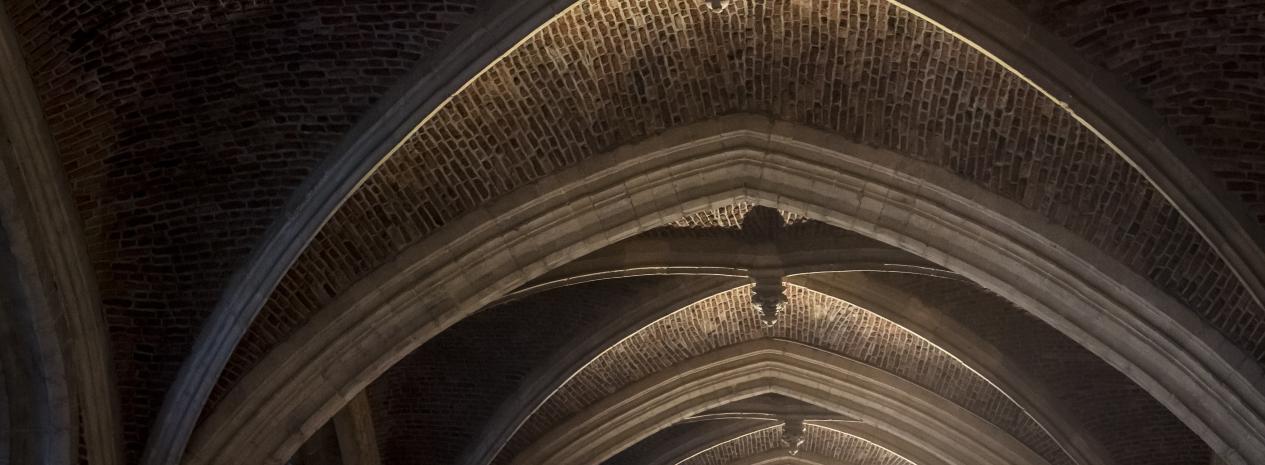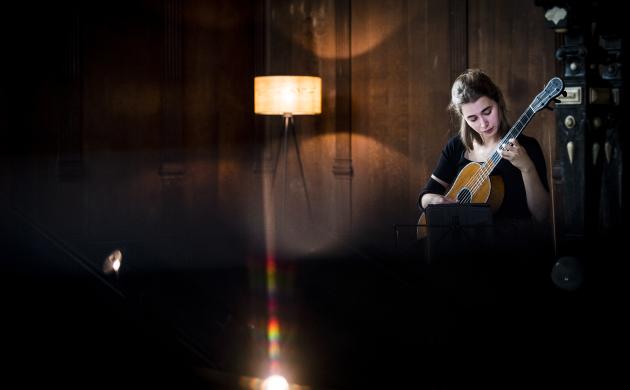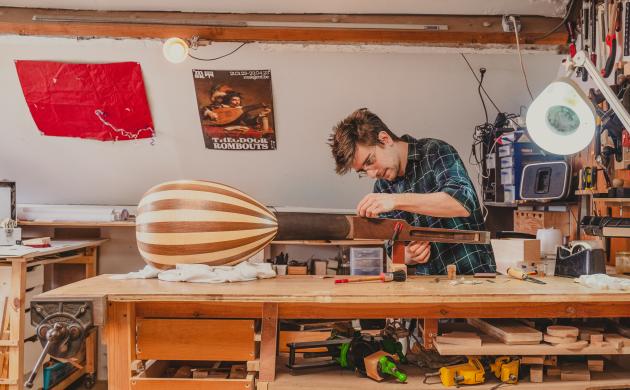In the early 17th century, the lute was one of the most popular musical instruments in the Low Countries. Parents of standing who wanted to give their children a good start in life, and had the financial means to do so, gave them music lessons. The most popular instruments at the time were the harpsichord and ... the lute.

Lemuel Quiroga, ontwerptekening, gelegd over Theodoor Rombouts, Kaartspelend gezelschap met luitspeler, Nationaal Museum, Warschau
The instrument
Some lute makers freely experimented with the structure of their instruments. A handful of paintings by painters including Theodore Rombouts (Card-playing company with Lute Player), Peter Paul Rubens (The Education of Marie de'Medici) and Jan Brueghel (II) (Vanitas Allegory) depict unique lutes. All closely resemble the theorbo or the arch lute: they have a long neck, extra bass strings and the neck ends in two screw cases that are an extension of the neck. However, what makes the depicted instruments unique is the position of the upper screw case, that of the bass strings. On a traditional (arch) lute or theorbo, the nut is lower on the instrument than the screw case. In the depicted instruments, it is exactly the opposite: the nut is at the very end of the instrument. That means the strings beyond the nut make a 180° bend to the back of the screw case over a roller (movable or not), and are connected to their tuning screws there. The major advantage seems to be that the screw case is therefore a lot closer to the musician and easier to reach when tuning.
Curiously, no historical examples of this type of instrument have survived, only painted examples. Moreover, these instruments are only depicted in paintings by artists from the Southern Netherlands (roughly present-day Flanders). It may therefore have been a typical 'Flemish' model produced here only in the years 1620-1640. Hence the name 'Flemish lute' or 'Flemish theorbo'. It is precisely one of these instruments that Justin Glaie built for the museum.

The soundmaster
In 2021, Justin Glaie began working on the project. The work started with a lot of research, with Glaie searching for as many images of this unusual instrument as possible. Actual construction started in 2022. On 24 May 2023, Justin Glaie and the Sweete Devils ensemble presented the result at the museum. They proposed a programme of music by composers including Gregory Huwet, Emmanuel Adriaensen, Leonora Duarte and Constantijn Huygens. Before the instrument was given a permanent home in the museum, Justin took it along to concerts in Belgium and abroad.
Biography
Justin Glaie has played the viola da gamba since 2006 and the lute since 2007. He started his studies at the CRR in Tours in 2009, with Lucas Peres and Pascale Boquet, for renaissance gamba and renaissance lute, respectively. He also started learning the theorbo on his own. In 2010, he enrolled at the CRR in Paris to study gamba with Ariane Maurette, and lute and theorbo with Charles-Edouard Fantin. In 2012, he studied the lute under Nicolas Achten at the Conservatoire Royal de Bruxelles, and in 2013 studied the gamba under Philippe Pierlot at the Royal Conservatory of Brussels.
Justin has collaborated on various projects with well-known conductors including Nima Ben David, Michel Laplénie, Yvon Repérant, Simon Heyerick, Nicolas Achten, Jean Tubéry and Lionel Meunier. He plays lute, theorbo and gamba in concerts and on CD recordings with different ensembles, in particular Scherzi Musicali, In Alto, Sweete Devils, La Grande Chapelle and Musae Jovis. He also has a passion for making historical plucked instruments, and graduated from CMB Puurs in 2019 as a professional Luthier (specialising in Lutes).




